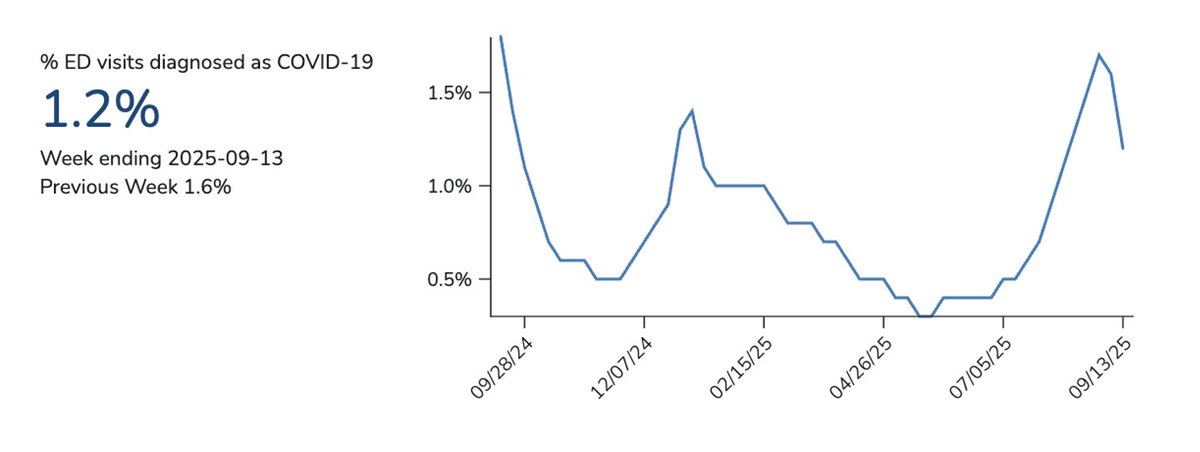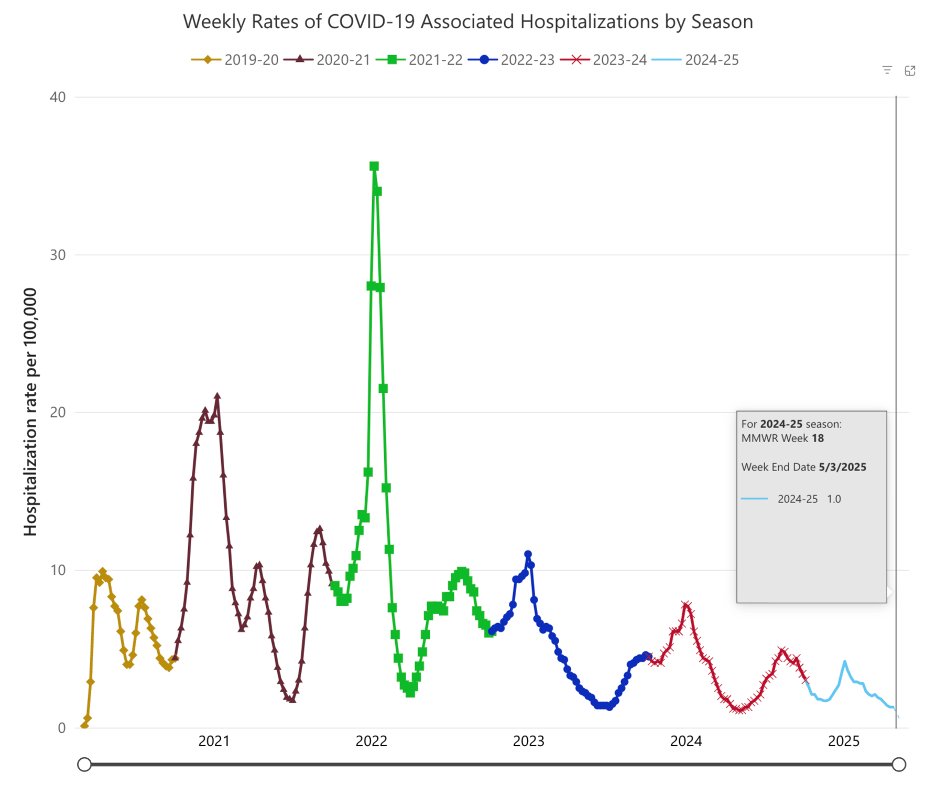6-1/ My COVID update for epidemiological weeks 5-6 of 2025.
Biobot's latest wastewater numbers indicate the current XEC wave has receded a bit—but we might see a secondary bump as the numbers level off in West and Midwest, and climb a bit in the South.
Biobot's latest wastewater numbers indicate the current XEC wave has receded a bit—but we might see a secondary bump as the numbers level off in West and Midwest, and climb a bit in the South.

6-2/ As US COVID waves go, wastewater numbers indicate this has been on the low side, but we don't really know if the viral shedding of JN.1 and its descendants has remained consistent with previous variants. 

6-3/ When it comes to ED visits, hospitalization, and mortality, this has been the mildest wave ever in the US. But... 



6-4/ But compared to the dominant XEC, LP.8.1x has a high growth rate. Maybe it will create a smaller secondary wave at the tail end of this one? Or maybe it will surpass XEC?—but I suspect our refreshed NAbs from JN.1 and XEC will prevent it from creating a bigger wave. 



6-5/ Even though the Morbidity and Mortality stats are no longer being updated and displayed on the CDC website, we can still get the archived stats out of Wonder. And Wonder shows us that COVID came in 14th out of the 15 most common causes of death in 2024. 



6-6/ Meanwhile, as a percentage of ED visits and test positivity, influenza is leaving COVID in the dust this respiratory season. Flu A (of the non-Avian kind) still dominates, but influenza B cases are starting to rise. 





6-7/ RSV rates are dropping now. But this is the third respiratory season in row where RSV infections have been higher than the pre-COVID RSV waves. According to this paper in Nature, RSV-B at least, has some new mutations that make it more infectious.
nature.com/articles/s4146…

nature.com/articles/s4146…


6-8/ The USDA and APHIS are still reporting on A(H5) in poultry and livestock. Poultry infections may have peaked in December. The January Livestock, Dairy, and Poultry Outlook says there are indications that fewer birds were slaughtered last month. 



6-9/ In the last 30 days, 35 new dairy herds were infected with A(H5) in California, and 7 in Nevada. inThe NV infections were all in the past 10 days. And a dairy worker in Nevada was infected. His only symptoms were pink eye, though. 

6-10/ That's it for this update. See you again in two epi weeks.
@threadreaderapp unroll
• • •
Missing some Tweet in this thread? You can try to
force a refresh






























